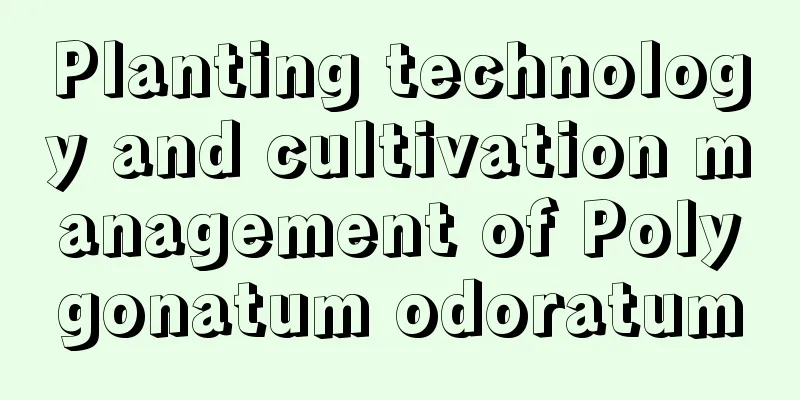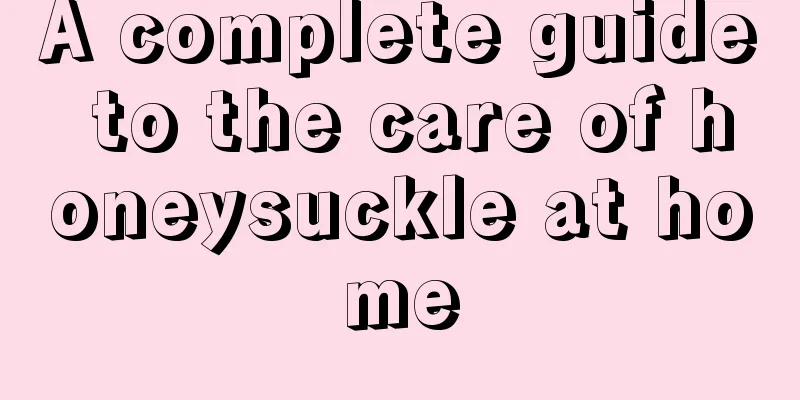Planting technology and cultivation management of Polygonatum odoratum

|
Polygonatum odoratum is a perennial herb of the genus Polygonatum of the Liliaceae family. It is not only a common Chinese medicinal material , but can also be used as a high-end nourishing food, delicacy and beverage. It is now exported in large quantities to foreign countries and has broad prospects for cultivation. So what are the planting techniques and cultivation management of Polygonatum odoratum ? Let’s learn more about it below. 1. Planting site selection Polygonatum odoratum prefers a shady, moist, well-drained environment and is suitable for growing in a semi-shaded and semi-sunny place. Therefore, when choosing a planting site, priority should be given to places with higher terrain, deep soil and rich organic matter content. 2. Land preparation and fertilization Before planting Polygonatum, it is best to apply 2000-3000 kg of manure, compost, etc. as base fertilizer per mu after the previous crop is harvested, deep plow the land, harrow and level it to make ridges. Generally, the ridge width is 1.6 meters, the working road width is 30-40 cm, and the ridge height is 15-30 cm. At the same time, dig drainage ditches around the area. 3. Key points for sowing The method of horizontal strip sowing can be adopted. Dig shallow trenches horizontally on the prepared ridges for Polygonatum odoratum, with a depth of about 3 cm and a row spacing of 10 cm. Sow the seeds evenly in the trenches and cover with 2-3 cm of loose soil. There is no need to step on it. After raking it flat, cover the ridge surface with conifers, weeds or straw to keep it moist. Sow about 10 kilograms per mu. 4. Field management (1) Irrigation: Irrigation methods include pouring water, digging trenches and sprinkler irrigation. (2) Fertilization: In spring, when the seedlings are 5 cm tall, apply 1,000 kg of human and animal manure per mu. The second time is after the seedlings wither, apply 2,000 kg of compost or manure, plus 10 kg of phosphate fertilizer. (3) Intertillage weeding: After the seedlings emerge, the first weeding can be done by hand pulling or shallow hoeing to avoid damaging the tender seedlings. In the second and third years, before seedlings emerge, cover the ground with a layer of fine soil with yellow grass in the winter. Since the rhizomes are densely covered on the surface, there are fewer weeds and basically no weeding is required. (4) Pests and diseases: Polygonatum odoratum has relatively few pests and diseases. If pests occur, the damage is not serious. The key is to prevent and kill underground pests when sowing. 5. Harvesting and processing Polygonatum is usually harvested in the third year after planting. When harvesting, care should be taken to protect the rhizomes to avoid damage. The harvested rhizomes should be properly treated, such as washing, air-drying or baking, in preparation for subsequent processing. In general, Polygonatum odoratum is a common Chinese medicinal material, which is easy to cultivate and has high yield. However, in order to obtain higher planting benefits, it is very important to carry out scientific planting and cultivation work.
|
<<: How to plant and manage girl fruit?
>>: Watermelon planting methods and management methods
Recommend
Hydroponic method of pearl hanging plant
Growth habit It likes warm, humid and semi-shady ...
What to do with red spider mites in roses and peanuts
1. Ventilation If the roses are grown indoors, th...
Can a hawthorn tree be planted outside your home?
Can a hawthorn tree be planted outside your home?...
What flowers are suitable for growing in Guigang? What are the city flowers and trees?
1. Climate characteristics of Guigang Guigang has...
Dragon fruit grafting method (picture) 3 common grafting methods illustrated
Pitaya grafting can increase the absorption capac...
What are the effects of Astragalus and what are the contraindications
1. What are the effects of Astragalus? Improve hu...
What to do if daffodils fall over
1. Binding and fixing If you find that the daffod...
Cultivation methods and maintenance of old wolfberry piles
How to grow wolfberry into an old pile Old wolfbe...
How to prune a large fortune tree and when is the best time to prune it?
1. How to prune 1. Shortening: For this kind of p...
Caterpillars grew in her flowerpot, but they came back to life by pinching off some branches, and the entire pot was full in one month!
What does white sandalwood look like? Some people...
How many times a year does freesia bloom?
1. The flowering period of this plant As we have ...
Can the leaves of freesia be cut?
1. Can I cut it? Of course, the leaves of freesia...
How to grow crab orchids so they bloom
Crab orchid flowering time Crab orchids usually d...
How many lucky clover plants should be planted in one pot?
How many lucky clover plants are planted in one p...
Can wood ash be used as fertilizer?
Wood ash as fertilizer Wood ash can be used as fe...









